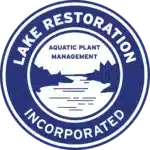Toxic Algae: What They Are and How to Prevent Growth
In peak algae season all over the country, it is common for bodies of water to have at least a little bit of algae on them. High temperatures are perfect growing weather for algae. Algae are a normal part of a water ecosystem, but when algae overgrow rapidly, they can become dangerous. Toxic algae can occur in all 50 states.
What are toxic algae?
When algae experiences an overgrowth, it is called an algae bloom. Some large algae blooms can contain toxins, called cyanobacteria, that are harmful to humans and animals. Algae blooms can occur in salt or fresh water. These blooms happen in slow moving water, in high sunlight areas, and in waters with excess nutrients, like nitrogen and phosphorus, that algae like to feed off of.
Algae blooms can look like paint on the water or like scum. These can vary in color from green to red, blue, or brown. They most often smell foul as well.
Harmful effects of toxic algae:
Animals and humans can experience negative side effects of toxic algae exposure. Irritation or rashes can happen, along with vomiting, weakness, diarrhea, and more. In pets that have been exposed, lethargy, difficulty breathing, or vomiting may occur. If symptoms are left untreated, severe illness or even death may result. If you or a pet is exposed to toxic algae, wash off and monitor for signs of exposure for the following few hours. Seek medical attention if symptoms arise.
If toxic algae are suspected, report the bloom to your local authorities and stay away from the water. Don’t allow kids or pets in the water.
How to prevent and treat growth:
Since large algae blooms appear due to conditions such as ample sunlight, excess nutrients, and stagnant water, there are a few things to consider to help prevent prime algae overgrowth.
1. Treat existing algae with an algaecide, such as Mizzen® algaecide from Lake Restoration. If trout, koi, or channel catfish are in your waters, use Cape Furl as a great alternative.
2. Use a nutrient reducer, such as SparKlear® or PhosControl® to rid your water of excess nutrients that aid in rapid algae growth. Make sure grass clippings and leaves aren’t getting into your water; this adds more nutrients in your pond.
3. Use an aerating fountain, like the Vitaflume® floating fountain from Lake Restoration. The fountain will help keep water moving and gas exchanged between the water and the air.
